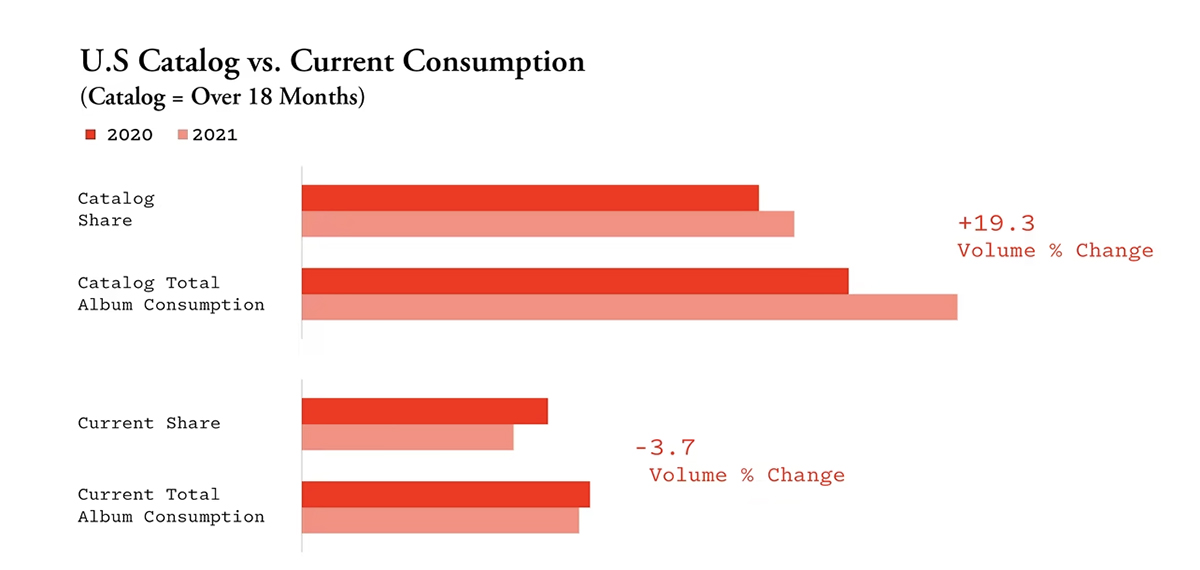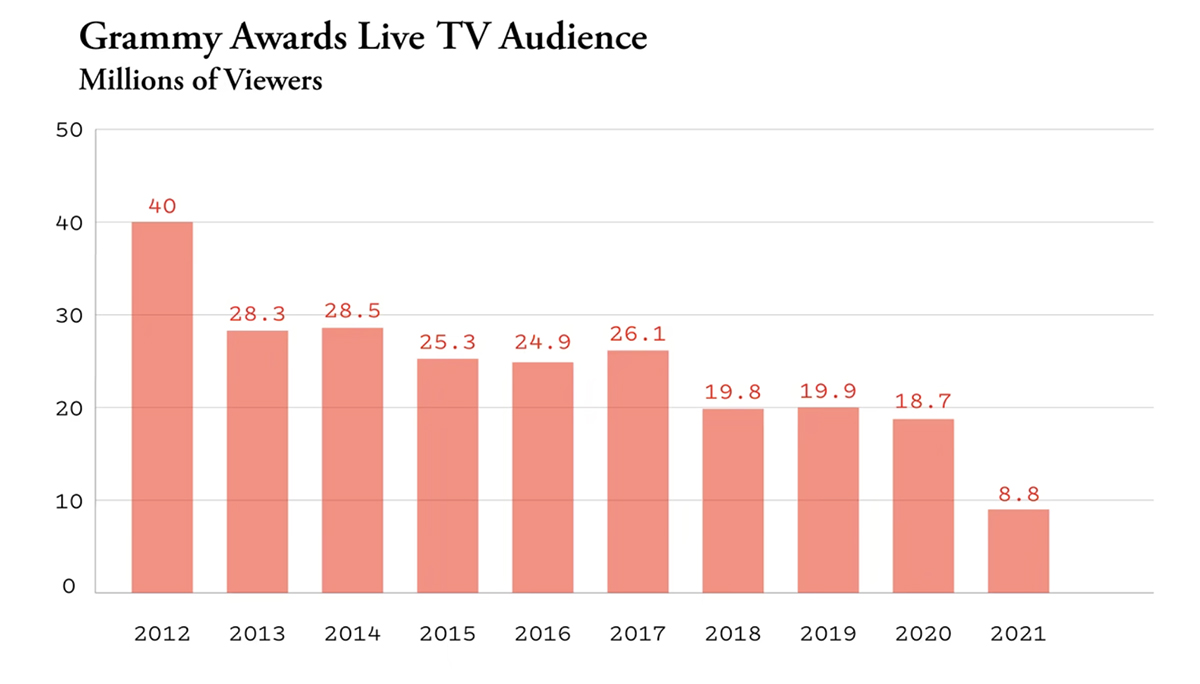
The idea of masterworks has been an important aspect of how we attribute value to music from the past. These are pieces that are still revered today as cultural objects that epitomize artistic innovation: i.e. Brahms’ romantic sonata, or the triumphant depiction of light over darkness in Beethoven’s Ode to Joy
Until now, popular music has somehow avoided the same kinds of high-cultural lionizations. The past half-decade has instead been obsessed with exploring the novelty of new musical innovations, particularly in the popular song form, from 1950s Rock and roll to the Pop punk revival of the 2020s.
Over this seventy-year period, the music industry has been at the forefront of discovering new talent, be they new classical pianists, or heavy metal bands.
In an article written by Ted Gioia for The Atlantic, he argues that the music industry’s business model is shifting from promoting new songs to promoting old ones.
Old beats new

According to MRC Data, old songs now represent 70% of the US music market. The 200 most popular tracks now account for less than 5% of total streams. The mix of songs actually purchased by consumers is even more tilted to older music. The current list of most downloaded tracks on iTunes is filled with the names of bands from the last century.
Why the decline?
Some people, especially baby boomers, suggest the decline in music is simply the result of lousy new music. Of course, every generation rejects the past in hopes of making their own mark on the canon. The results of which are then attributed to a shift in taste, rather than an innovation as such.
In the 1990s, things started to change. It was first noted in a study that asked over 200 college students the question: “If you could step into a time machine and press any year to go to — forward, or backward in time — what year would you pick and why?” The majority chose decades they never knew firsthand, the most popular being the 1960s. People started to look backwards, and music seemed to be an important factor.
Decline of A&R
The music industry has cut back on both discovering and nurturing young talents. The reason, Gioia suggests, is the fear of copyright lawsuits that has made many in the music industry afraid of listening to unsolicited demo recordings. The people whose livelihood depends on discovering new musical talent face legal risks if they take their job seriously.
As record labels lose interest in new music, emerging performers desperately search for other ways of getting exposure. Hello TikTok.
The trend is everywhere

In 2021, viewership for the Grammy Awards collapsed 53% from the previous year from 18.7 million to 8.8 million. It was the least-watched Grammy broadcast of all time. 98% of people between the ages of 18 and 49 had something better to do than tune in.
The hottest technology in music is a format that is more than 70 years old, the vinyl LP. Song catalogs with the highest demand are by musicians in their 70s or 80s. Record labels, once a source of musical innovation, are now simply following trends on social media platforms.
- Vale, Maestro: Sir Andrew Davis (1944–2024) - April 22, 2024
- The Lord of the Rings Opera Gets Green Light from Tolkien Estate - April 15, 2024
- Chicago Takes the Leap with Youngest Appointment in CSO History - April 8, 2024


